EXHIBITIONS



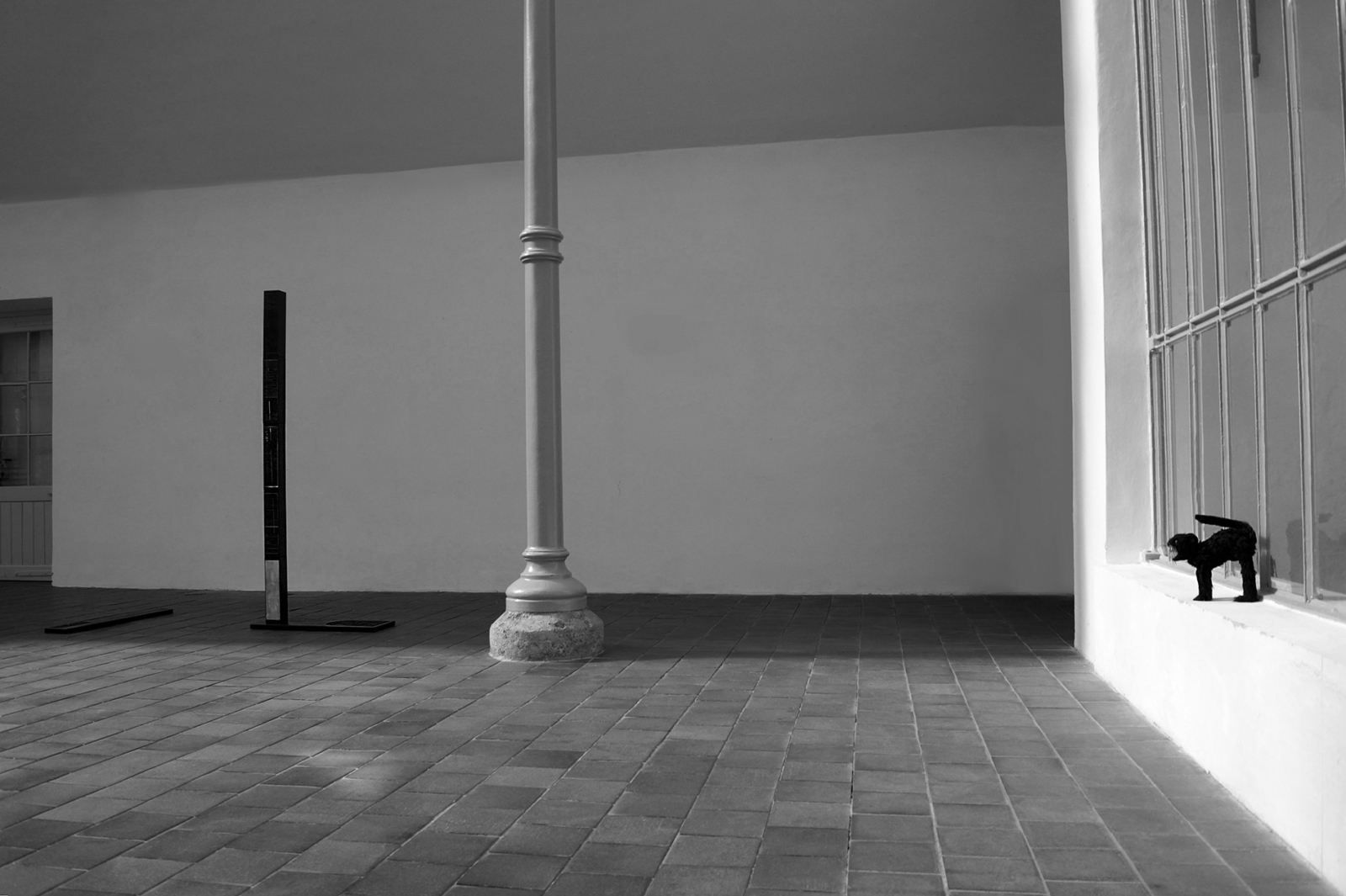
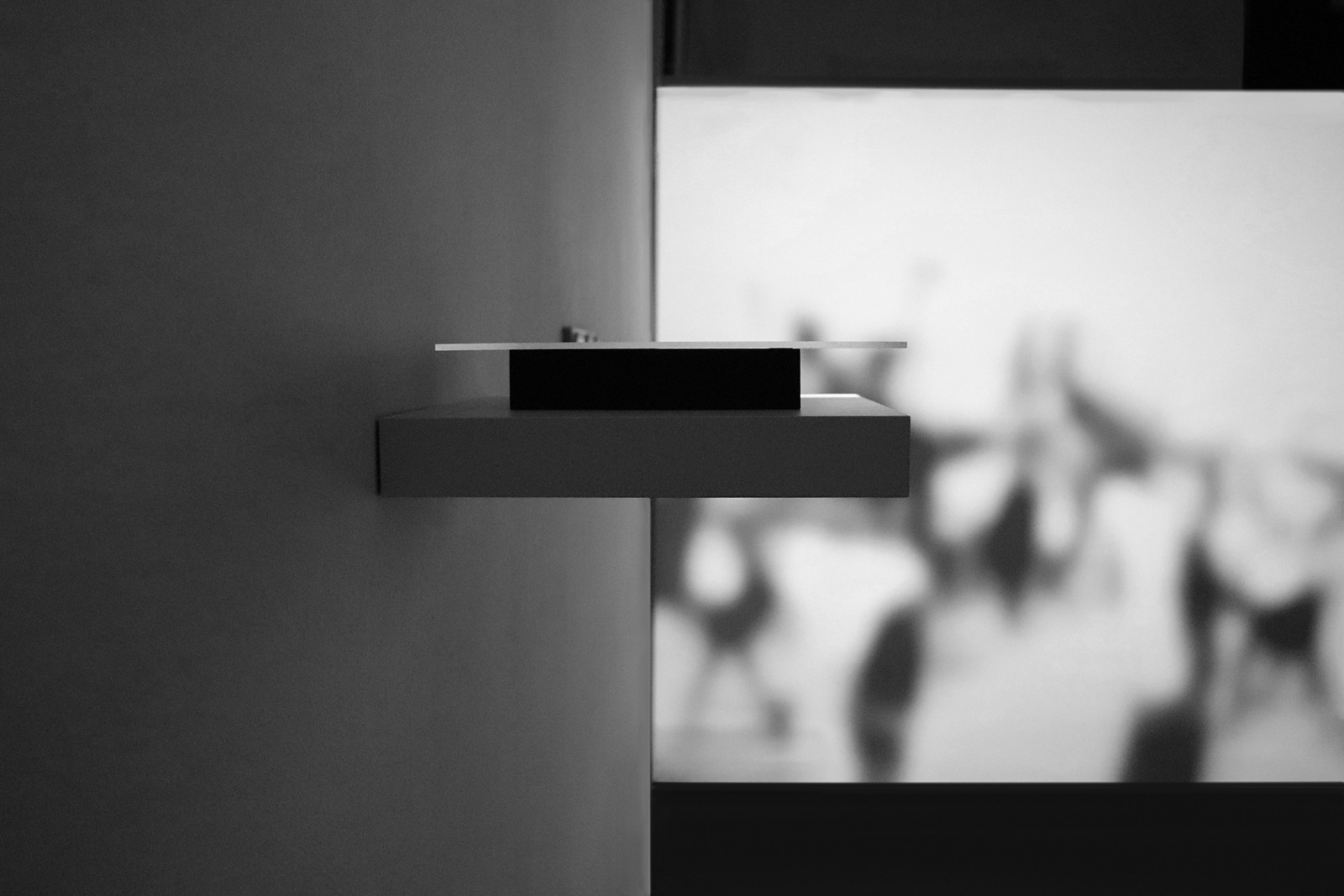

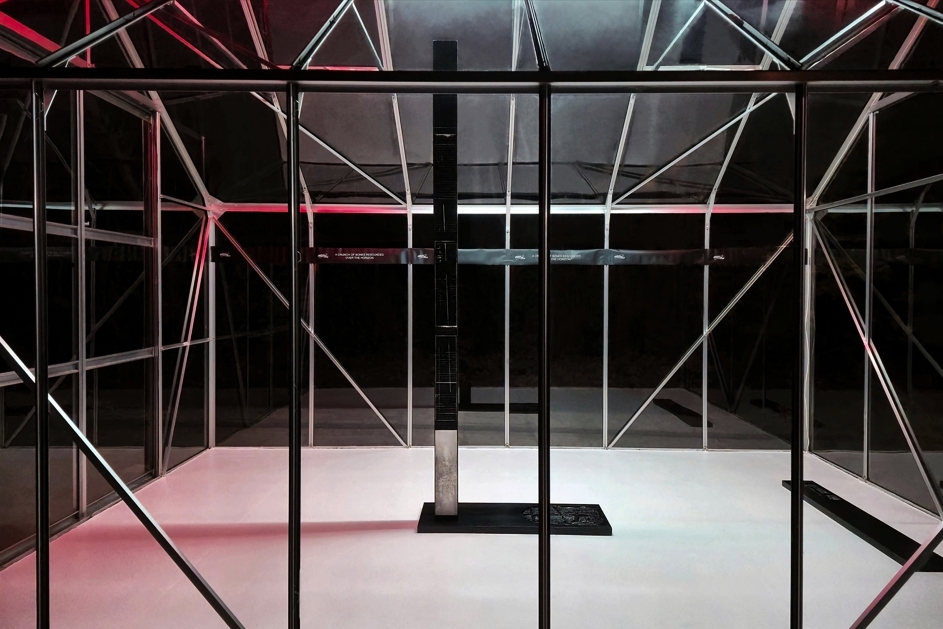
In this series of works, I turn to Deleuze’s philosophy of layering, distinction and repetition, vibration and oscillation. Contrasts are an integral part of our history. I draw on the concept of punitive restraint (Foucault) in an attempt to conceal the emotional component, as if severed by anxiety. The awareness of unrealised utopias and thinking in terms of totality are embedded in the details carved into the wooden surface and obscured by black pigment. I continue to reflect on the recurrence of violence in history and the systems of formalisation, classification, and ordering of events that create a distance between us and the emotional perception of the tragic episodes of our time. For the visual narrative, I turn to religious symbolism, techniques often employed in sacred art, and the cold conventionality of minimalism. The vertical, fragile lines of the monument-like sculptures stand in contrast to the contextualised element. The horizontal, repetitive lines drawn on the “monuments” faintly resemble bureaucratic forms or formal lists extending into infinity, an endless repetition of history’s mistakes that cannot be corrected. Modernity is steeped in anxiety and catastrophising, giving rise to a compulsion to systematise everything.

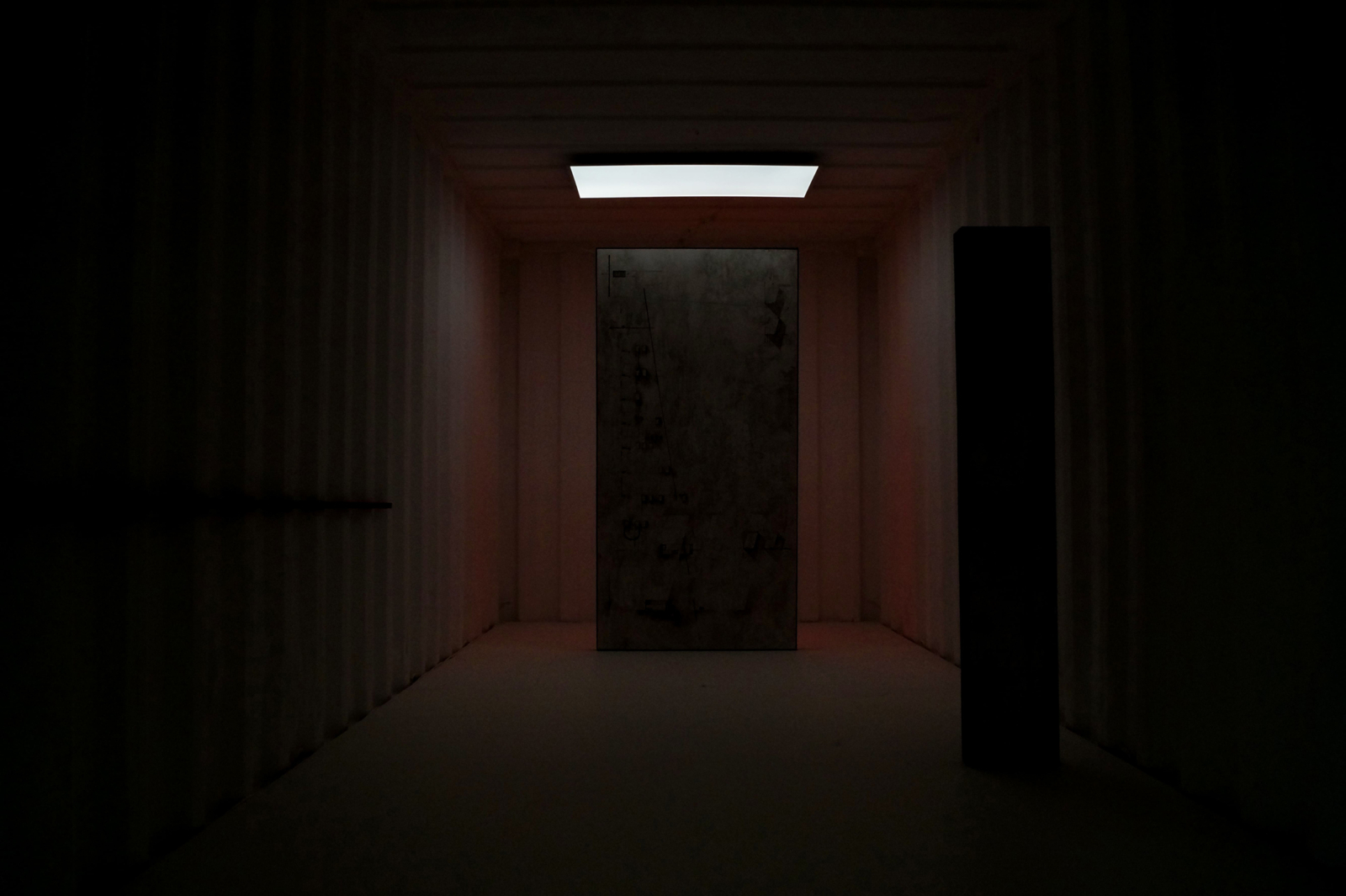
War memorials give the impression of something depressing and coldly detached, yet they have regained relevance in the context of disputes among various groups over history, over who is remembered, and how. The exhibition presents works from the Cargo 200 series. The working surface is prepared using techniques from icon painting, yet without specific iconographic images, only schemes, as if the structure of faith remains, but the content has fled. This installation reflects on the phenomenon of war as a whole, not merely on current conflicts. Evil is always “the other”. One would never use such a word to describe oneself. But evil is not outside us. It is sedimented in our silences, embedded in our omissions, in the rituals of forgetting we mistake for healing. Memorials do not preserve memory, they formalise oblivion, dressing amnesia in marble and symmetry. We mourn only to forget more elegantly. Memory reduced to form, to an aesthetic gesture, to a cultural obligation—is a lie passed off as compassion. There is no redemption in repetition. History is a scar we scratch open again and again, just to prove we’re still alive. But that isn’t life. It is existence after defeat.
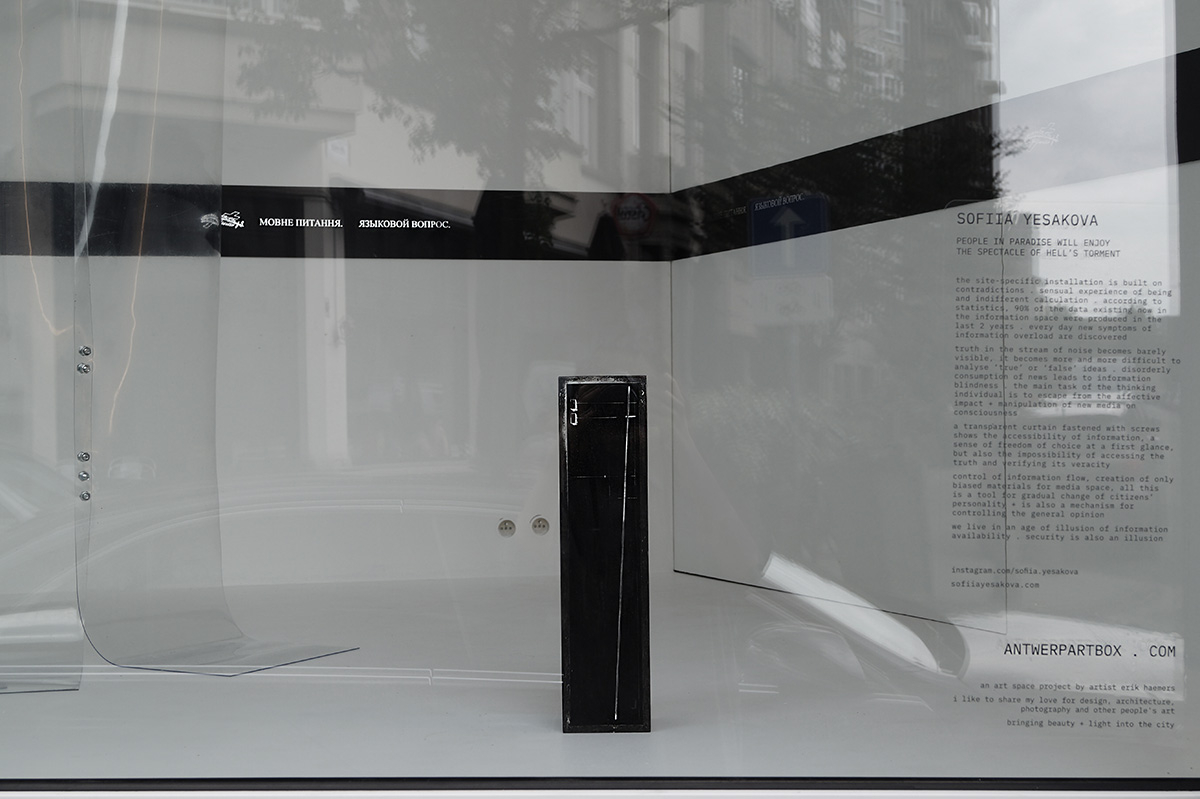
The site-specific installation is built on contradictions: the sensual experience of being and the indifferent calculation of data. According to statistics, 90% of the information in today's digital space was produced within the last two years. Every day, new symptoms of information overload emerge. Truth, lost in a stream of noise, becomes barely perceptible; it is increasingly difficult to discern what is “true” and what is “false.” The chaotic consumption of news leads to informational blindness. The thinking individual's primary task is to resist the emotional manipulation and cognitive control exerted by new media. A transparent curtain, fastened with screws, symbolizes the apparent accessibility of information and the illusion of freedom of choice. Yet it simultaneously reveals the impossibility of reaching truth or verifying its accuracy. Control over information flows and the creation of biased media content have become tools for reshaping individual consciousness and steering public opinion. We live in an era dominated by the illusion of informational abundance. Even security has become a mirage.
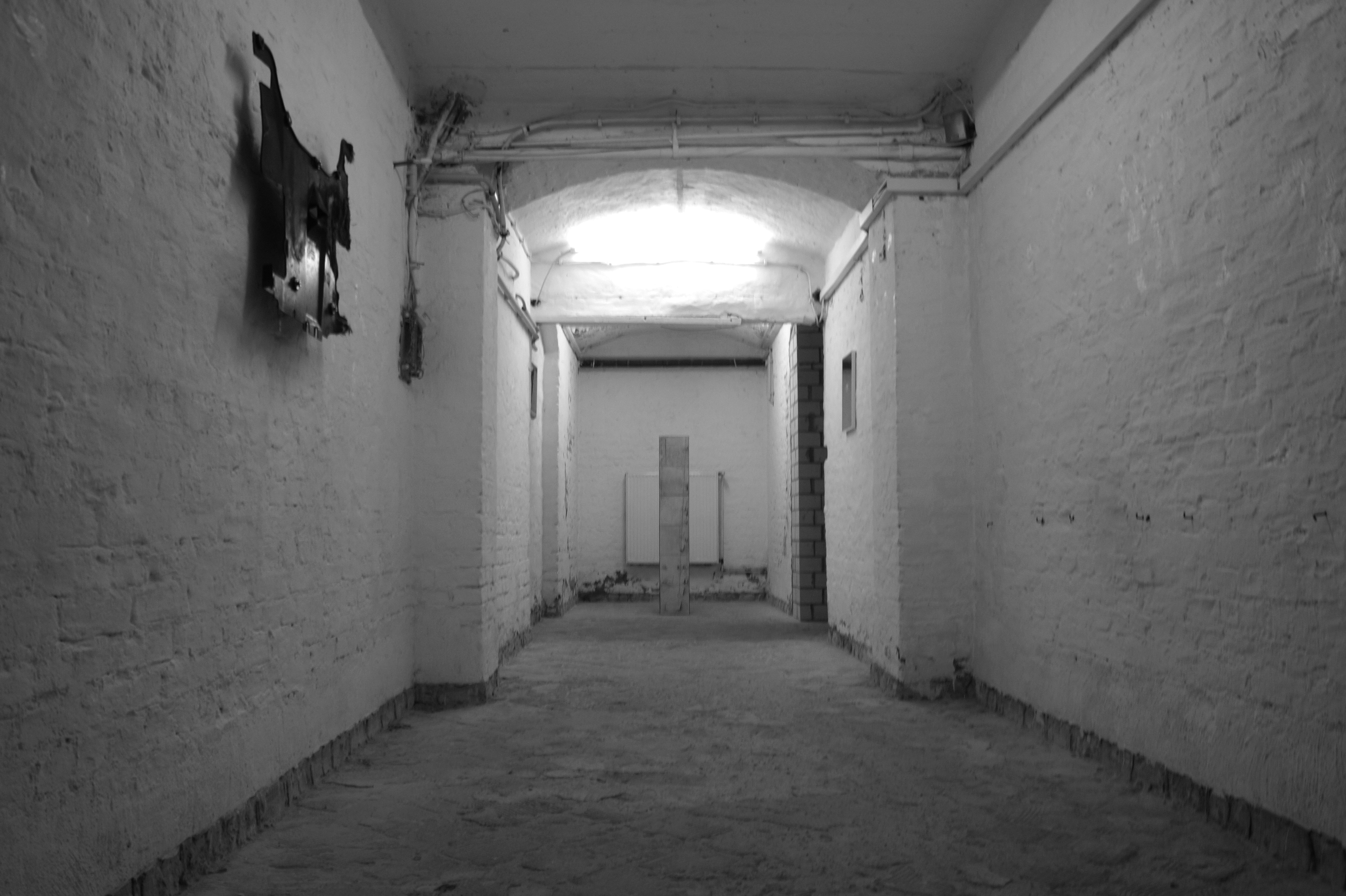
The exhibition presents a total installation that unites diverse materials and artistic techniques within a single space, evoking a sense of tense anticipation of an imminent catastrophe. The result is a multi-layered audio-visual landscape—a poetic composition rooted in feelings of growing anxiety, melancholia, and a certain nostalgia. In an era of escalating wars and growing habituation to endless violence, this artistic statement seeks to revive humanistic values within a new post-apocalyptic reality. It places emphasis on both collective and individual memory. There has been undeniable progress in cruelty, and mass self-deception is already leading to global catastrophes, unfolding before our eyes. At the same time, the most widely accepted visions of a positive future in Western societies are increasingly shaped by isolated concepts: superficial collective happiness and a totalitarian utopia. Utopian thinking is closely tied to ideas of insularity and separation. We are witnessing a dynamic shift, from authoritarianism to a totalitarian regime of social control.
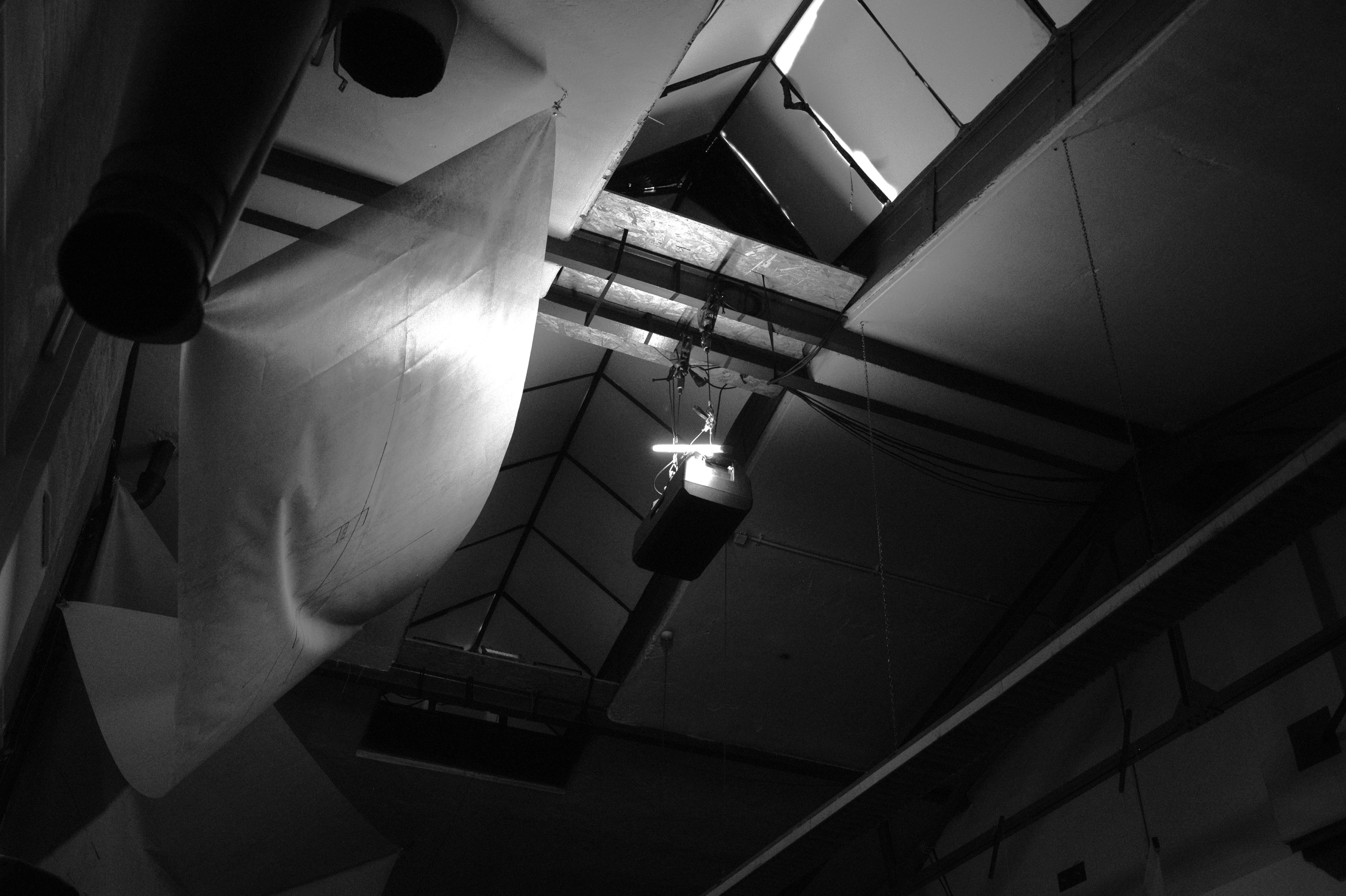
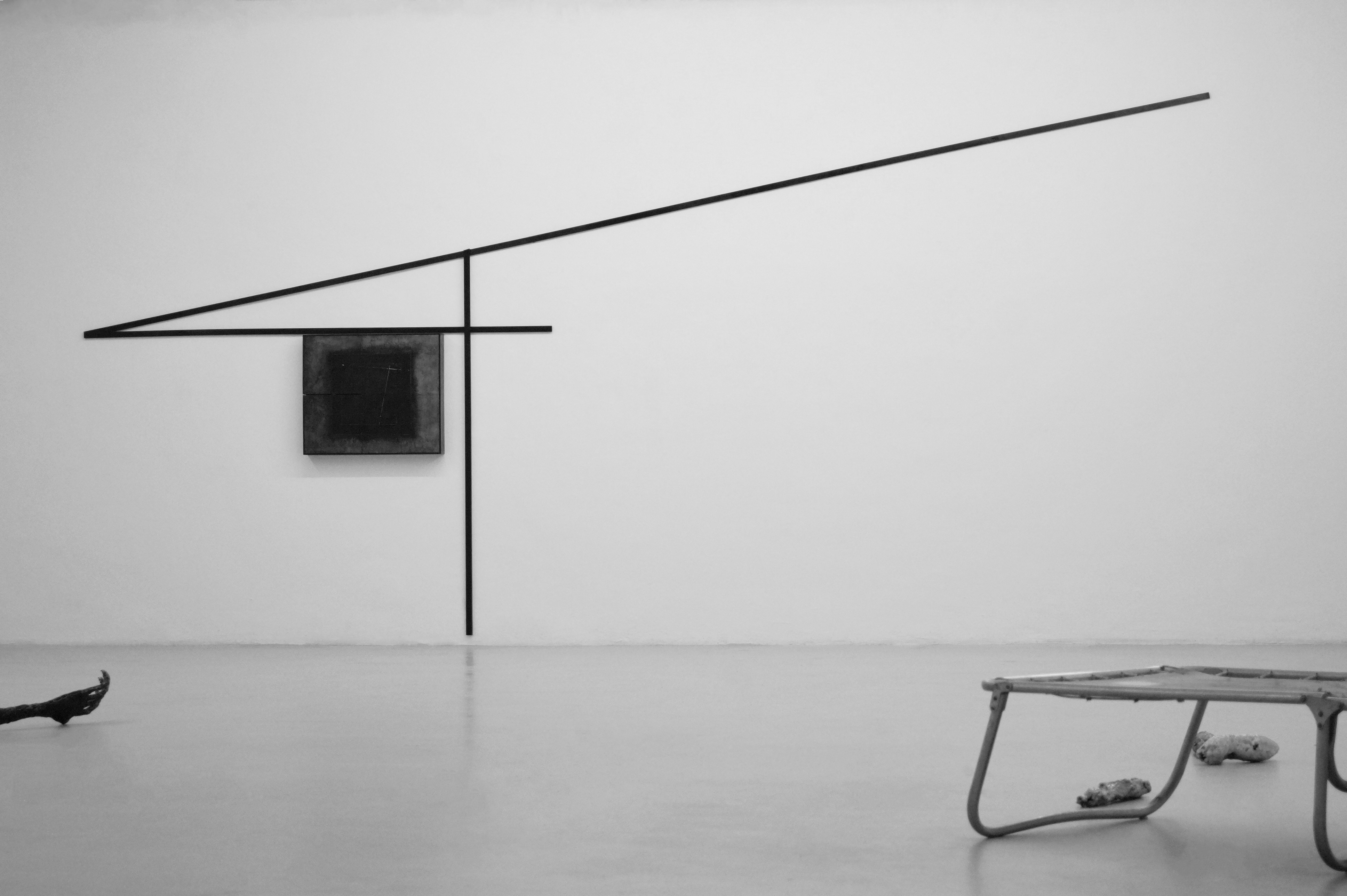
The long wooden elements in the installation Cargo 200. Experimental Projections on Surfaces. 5.7. are constructivist details, referencing the dream of a better world once envisioned by the constructivists. But what went wrong? We are now living in that imagined "future," and yet a better world remains out of reach. This work also employs the technique of iconography, though without specific religious figures. The black square represents a burial site. Since we do not know all the dead, their names, their stories, we can barely make out a few coffins in the overhead projection. The piece, taken as a whole, speaks to war as a broader phenomenon, not just a comment on current events. Through her visual and symbolic language, the artist addresses the cyclical recurrence of world-historical events. Themes of violence and resistance are deeply embedded in the human condition. Our capacity to adapt to the senselessness of war and tragedy, regardless of scale, stands in stark contrast to our awareness of their devastating consequences. Catastrophes leave indelible scars on the human soul.

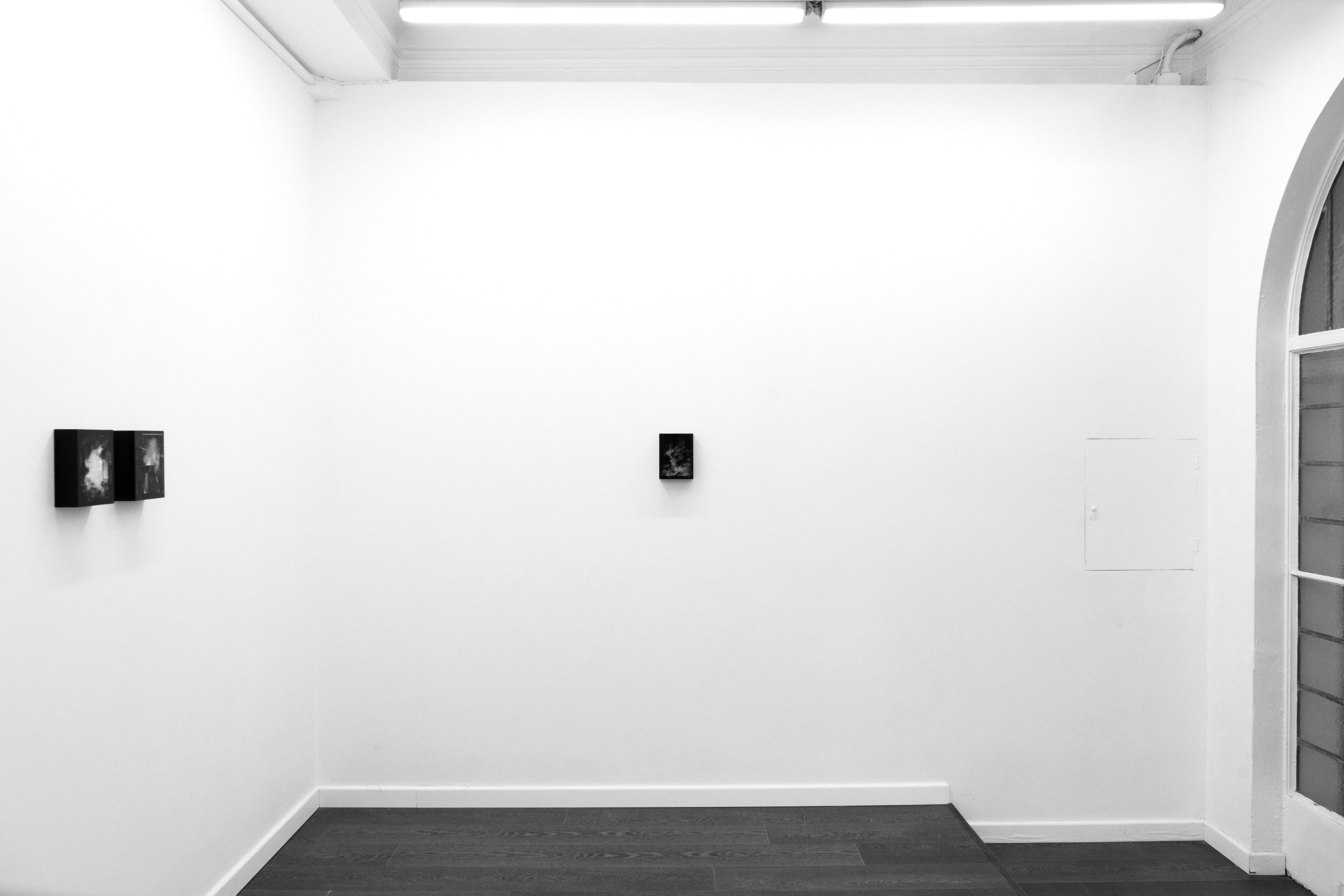
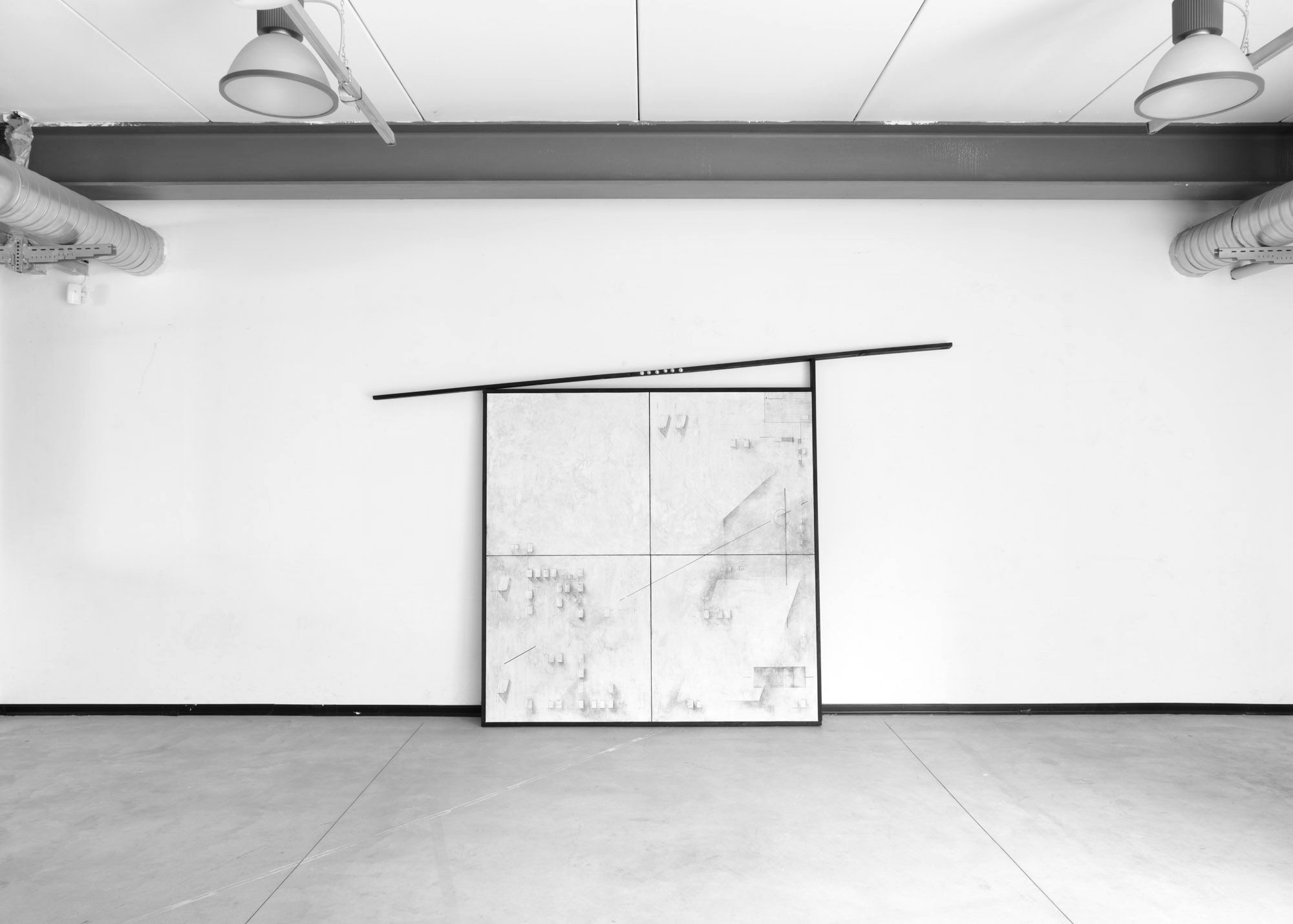
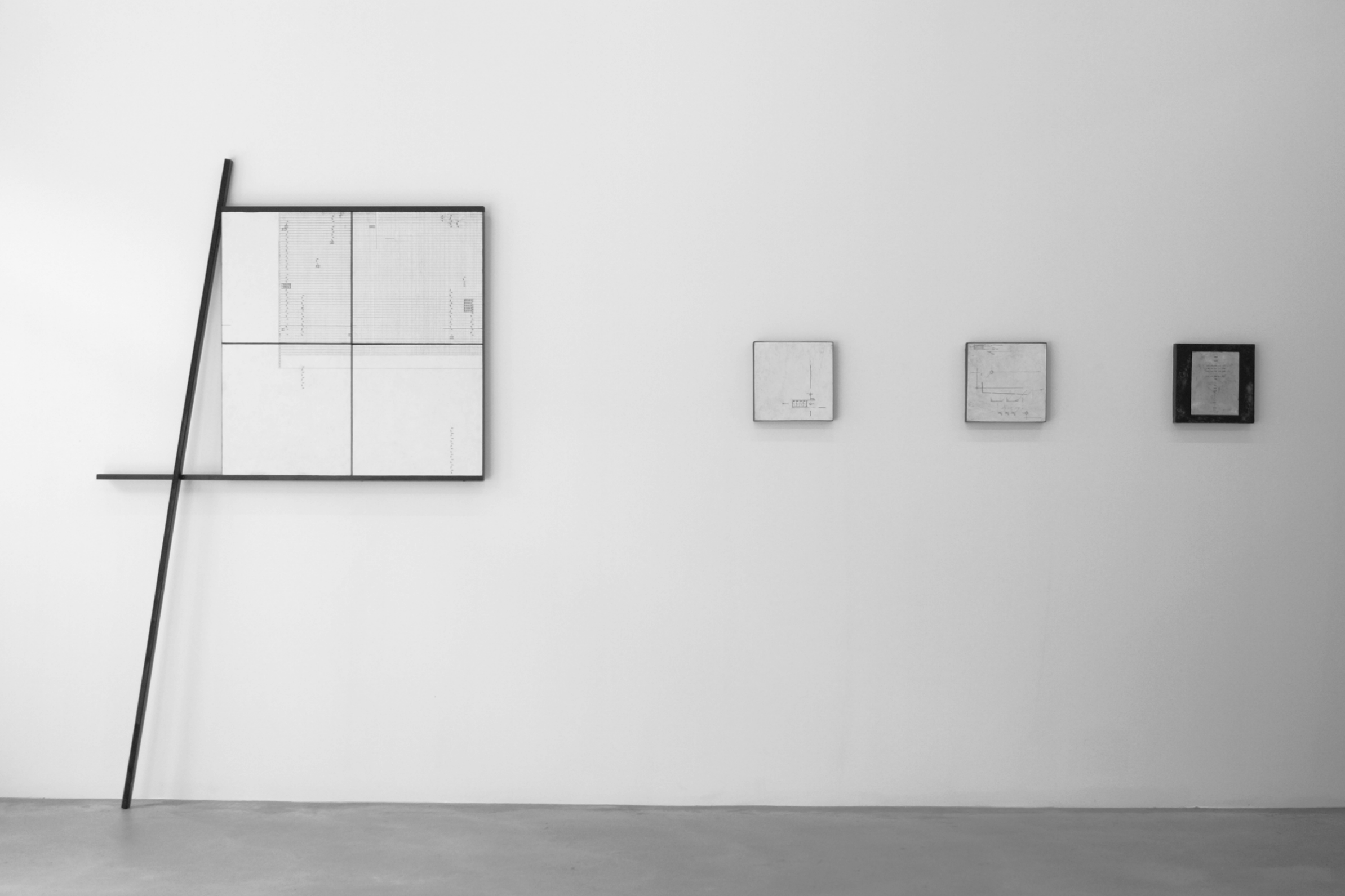
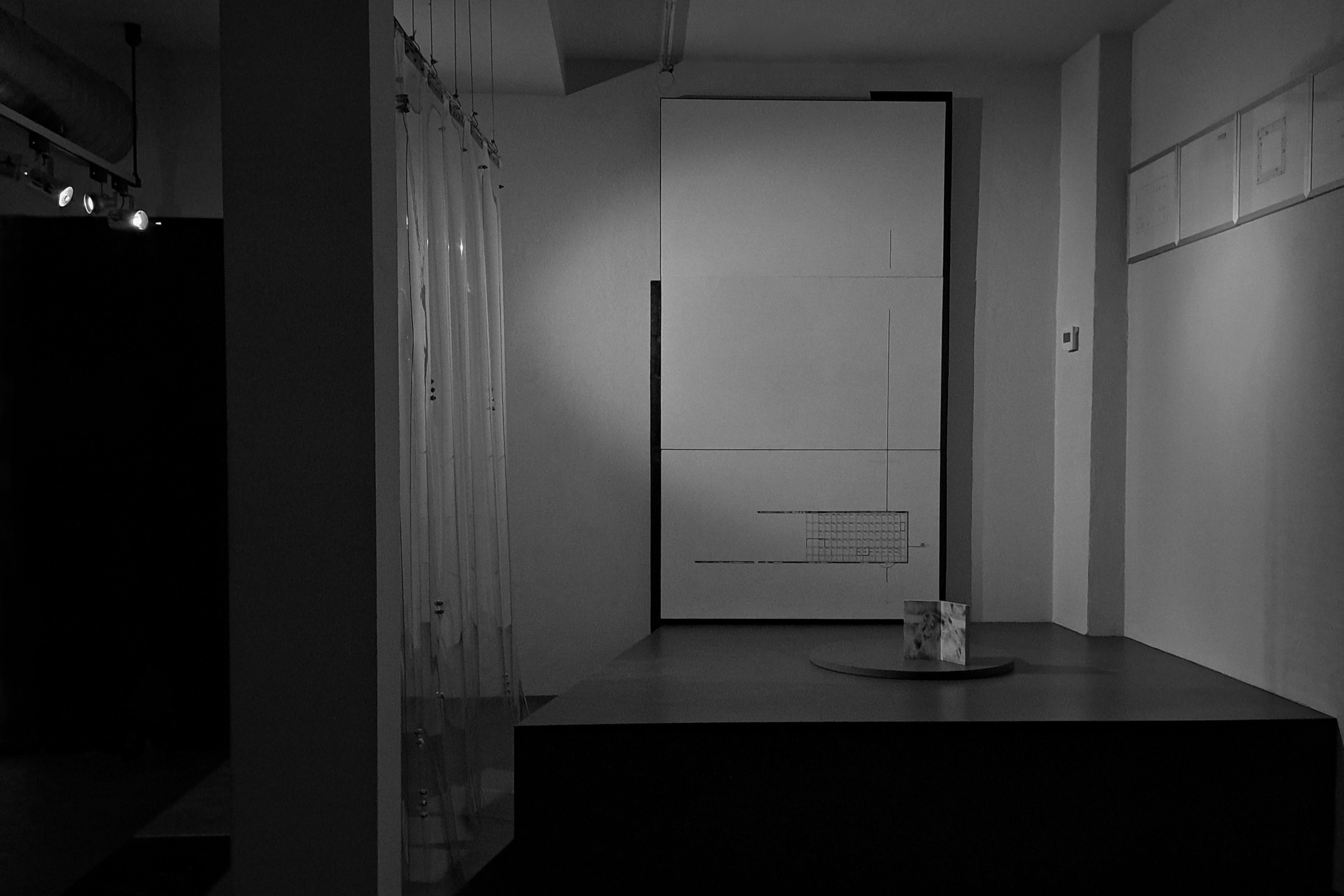
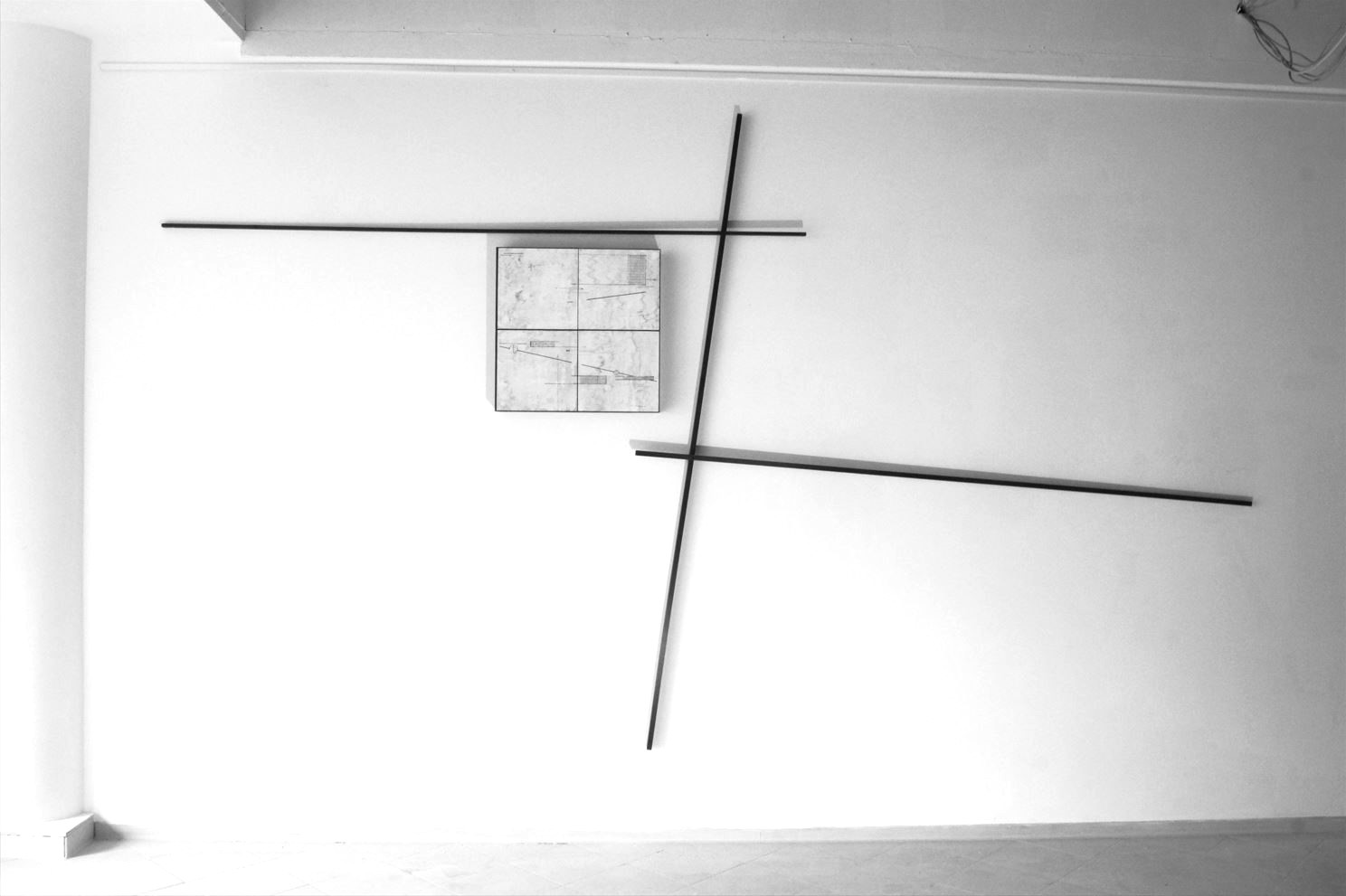
When and how is it okay to express anger? Anger is one of the most human and at the same time most controversial emotions. It is often perceived as particularly threatening and may be judged by some, while triggering defensiveness in others. The idea of losing control and becoming angry is frequently viewed as something negative. As part of the exhibition "Analysis of Anger", we turn our attention to this seemingly dark emotion and aim to shed new light on the topic through in-depth exploration. We want to investigate and understand what might actually lie behind this powerful feeling. A central aspect of the exhibition is the perception and observation of our own anger:
What makes you angry? How do you deal with this emotion? What feelings remain after the anger has passed?
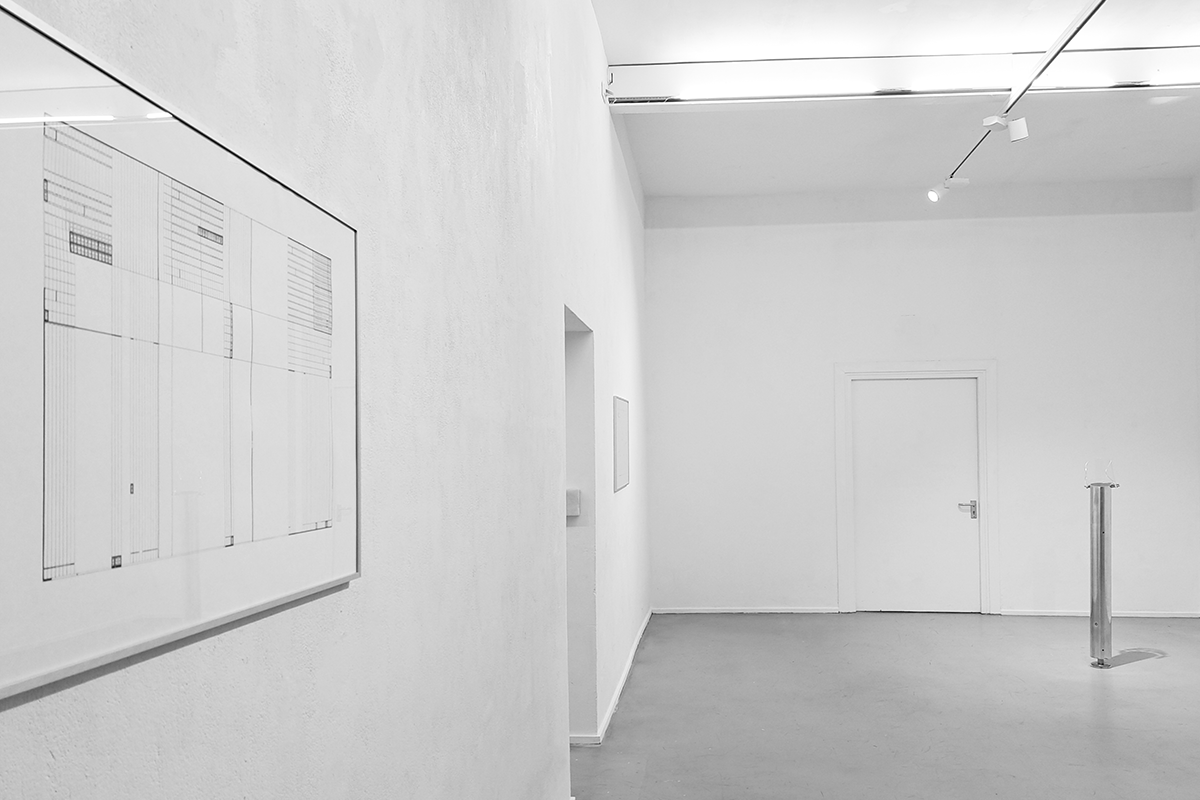
with artists Pierre Allain, Maxime Chabal, Olga Mathilde Gärtner, Viktor Petrov, Stina Elisabeth Stühmer, Sofiia Yesakova, Jannis Weu
Curated by Maxime Chabal, Stina Elisabeth Stühmer
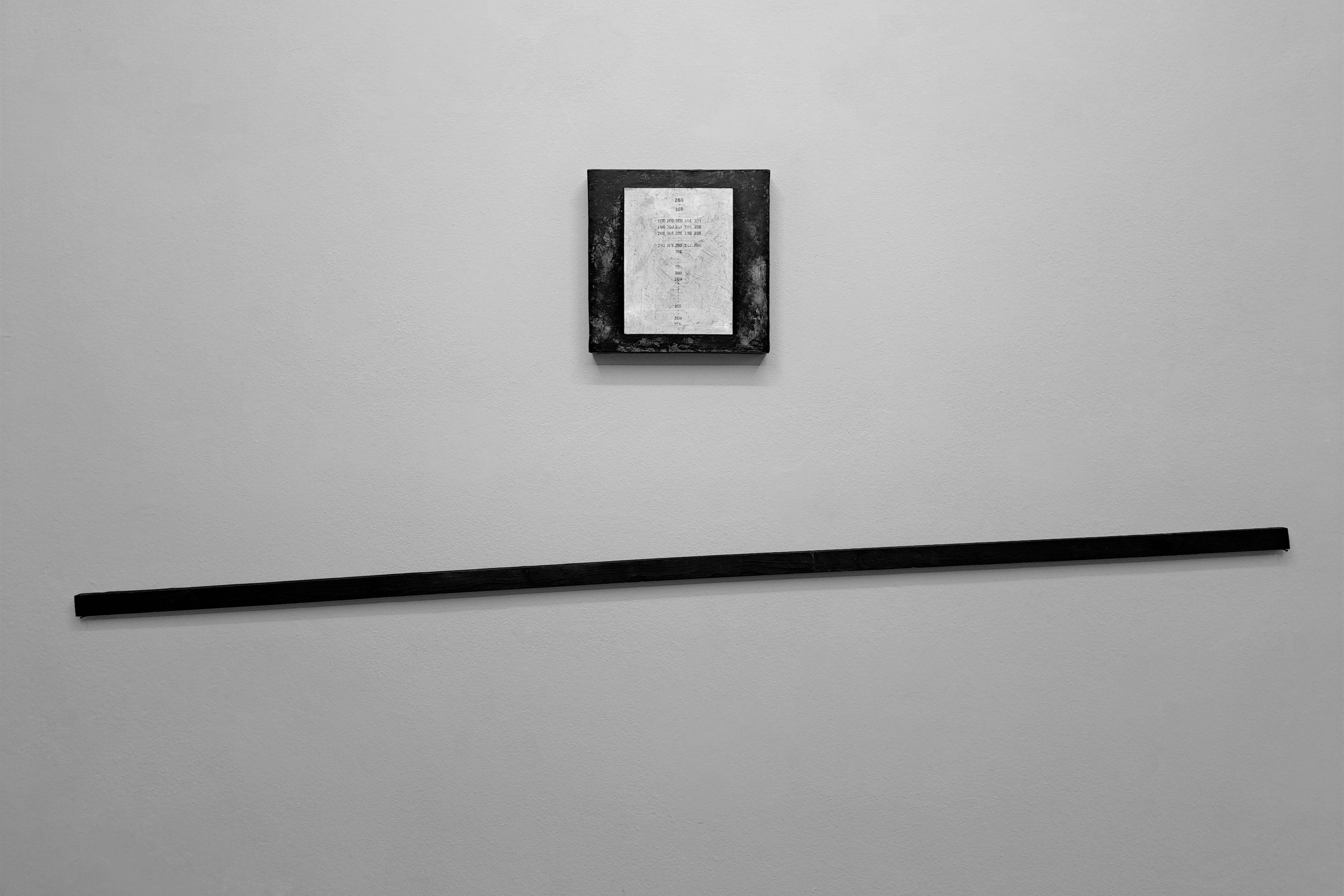
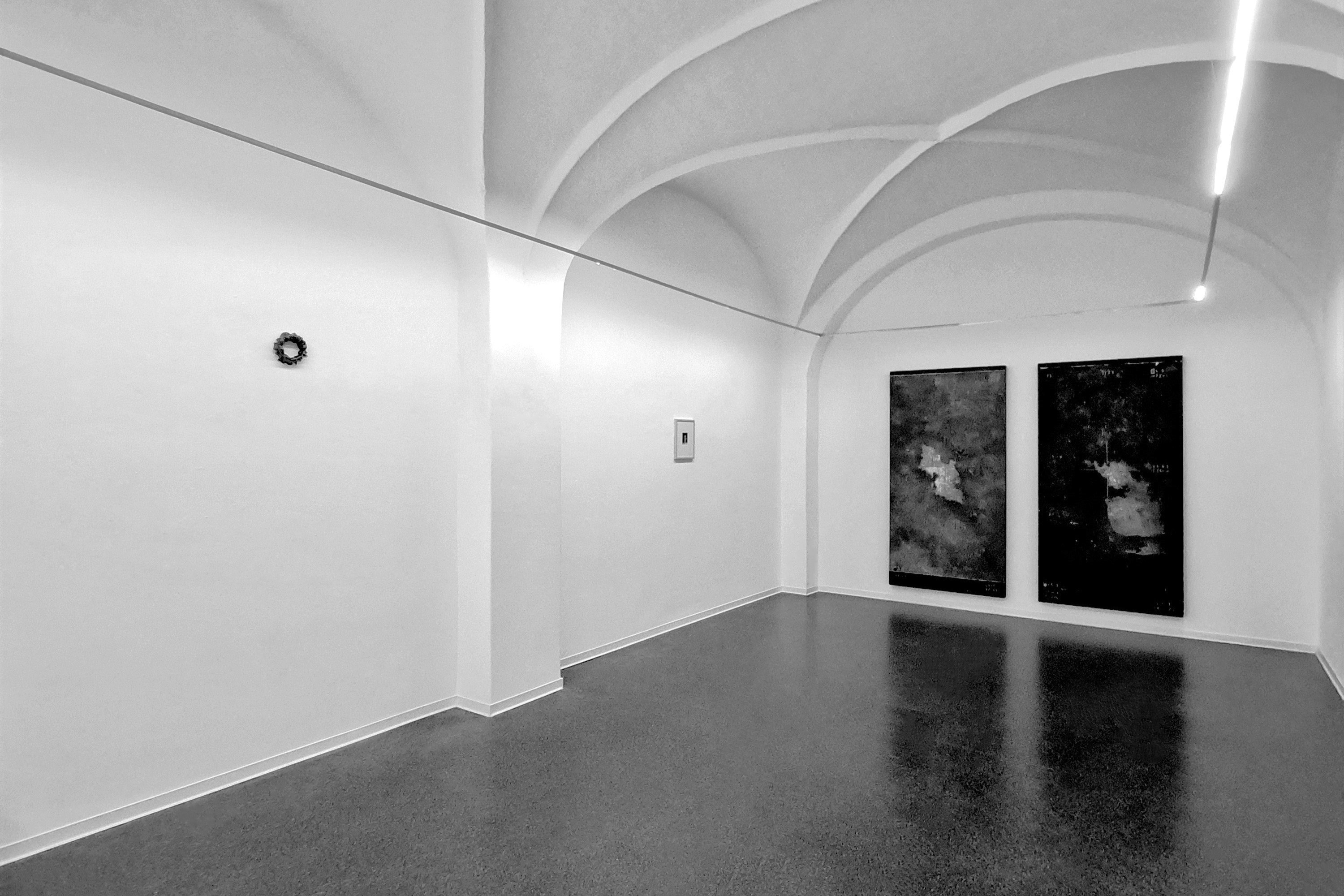
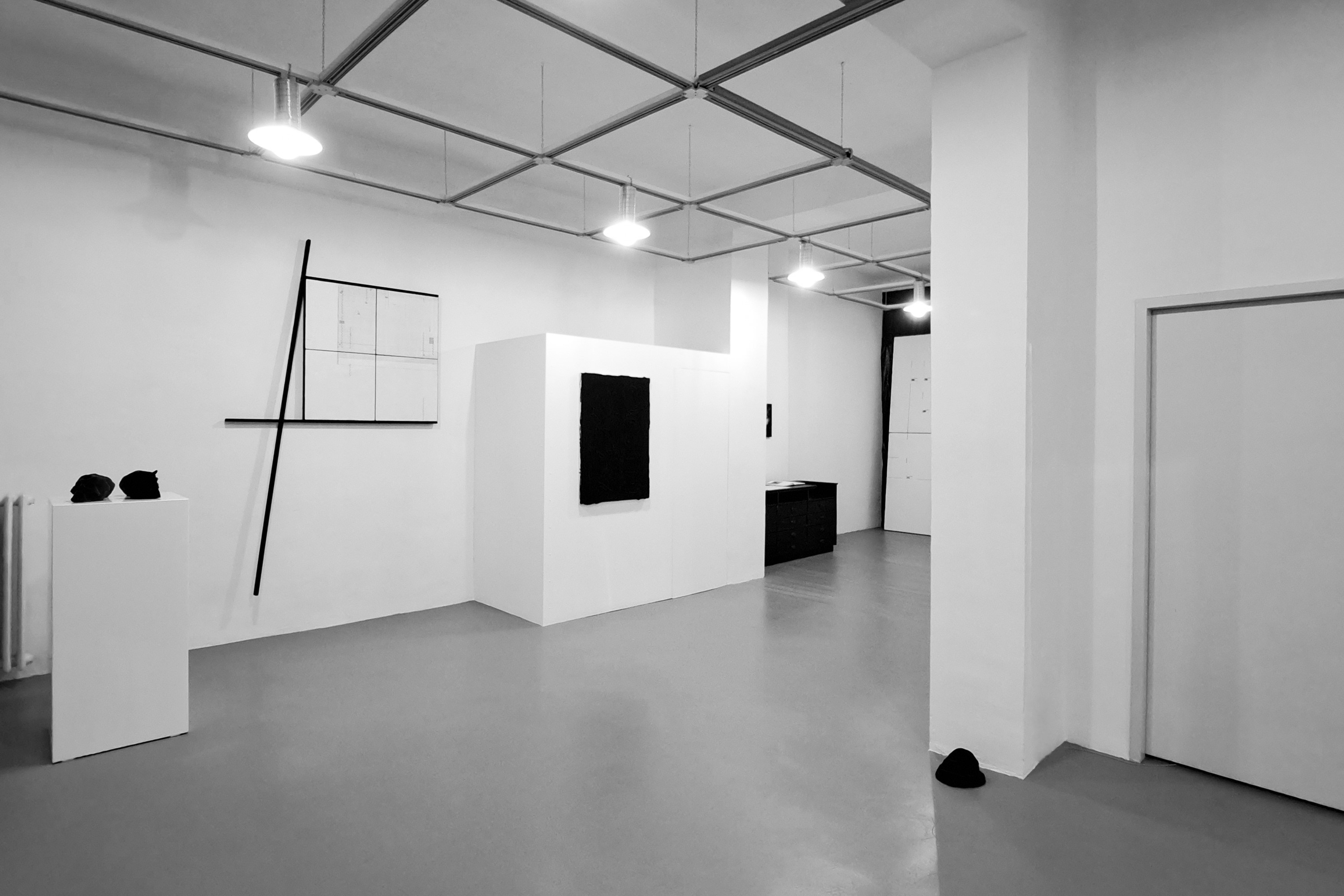
EXHIBITIONS







In this series of works, I turn to Deleuze’s philosophy of layering, distinction and repetition, vibration and oscillation. Contrasts are an integral part of our history. I draw on the concept of punitive restraint (Foucault) in an attempt to conceal the emotional component, as if severed by anxiety. The awareness of unrealised utopias and thinking in terms of totality are embedded in the details carved into the wooden surface and obscured by black pigment. I continue to reflect on the recurrence of violence in history and the systems of formalisation, classification, and ordering of events that create a distance between us and the emotional perception of the tragic episodes of our time. For the visual narrative, I turn to religious symbolism, techniques often employed in sacred art, and the cold conventionality of minimalism. The vertical, fragile lines of the monument-like sculptures stand in contrast to the contextualised element. The horizontal, repetitive lines drawn on the “monuments” faintly resemble bureaucratic forms or formal lists extending into infinity, an endless repetition of history’s mistakes that cannot be corrected. Modernity is steeped in anxiety and catastrophising, giving rise to a compulsion to systematise everything.


War memorials give the impression of something depressing and coldly detached, yet they have regained relevance in the context of disputes among various groups over history, over who is remembered, and how. The exhibition presents works from the Cargo 200 series. The working surface is prepared using techniques from icon painting, yet without specific iconographic images, only schemes, as if the structure of faith remains, but the content has fled. This installation reflects on the phenomenon of war as a whole, not merely on current conflicts. Evil is always “the other”. One would never use such a word to describe oneself. But evil is not outside us. It is sedimented in our silences, embedded in our omissions, in the rituals of forgetting we mistake for healing. Memorials do not preserve memory, they formalise oblivion, dressing amnesia in marble and symmetry. We mourn only to forget more elegantly. Memory reduced to form, to an aesthetic gesture, to a cultural obligation—is a lie passed off as compassion. There is no redemption in repetition. History is a scar we scratch open again and again, just to prove we’re still alive. But that isn’t life. It is existence after defeat.

The site-specific installation is built on contradictions: the sensual experience of being and the indifferent calculation of data. According to statistics, 90% of the information in today's digital space was produced within the last two years. Every day, new symptoms of information overload emerge. Truth, lost in a stream of noise, becomes barely perceptible; it is increasingly difficult to discern what is “true” and what is “false.” The chaotic consumption of news leads to informational blindness. The thinking individual's primary task is to resist the emotional manipulation and cognitive control exerted by new media. A transparent curtain, fastened with screws, symbolizes the apparent accessibility of information and the illusion of freedom of choice. Yet it simultaneously reveals the impossibility of reaching truth or verifying its accuracy. Control over information flows and the creation of biased media content have become tools for reshaping individual consciousness and steering public opinion. We live in an era dominated by the illusion of informational abundance. Even security has become a mirage.

The exhibition presents a total installation that unites diverse materials and artistic techniques within a single space, evoking a sense of tense anticipation of an imminent catastrophe. The result is a multi-layered audio-visual landscape—a poetic composition rooted in feelings of growing anxiety, melancholia, and a certain nostalgia. In an era of escalating wars and growing habituation to endless violence, this artistic statement seeks to revive humanistic values within a new post-apocalyptic reality. It places emphasis on both collective and individual memory. There has been undeniable progress in cruelty, and mass self-deception is already leading to global catastrophes, unfolding before our eyes. At the same time, the most widely accepted visions of a positive future in Western societies are increasingly shaped by isolated concepts: superficial collective happiness and a totalitarian utopia. Utopian thinking is closely tied to ideas of insularity and separation. We are witnessing a dynamic shift, from authoritarianism to a totalitarian regime of social control.


The long wooden elements in the installation Cargo 200. Experimental Projections on Surfaces. 5.7. are constructivist details, referencing the dream of a better world once envisioned by the constructivists. But what went wrong? We are now living in that imagined "future," and yet a better world remains out of reach. This work also employs the technique of iconography, though without specific religious figures. The black square represents a burial site. Since we do not know all the dead, their names, their stories, we can barely make out a few coffins in the overhead projection. The piece, taken as a whole, speaks to war as a broader phenomenon, not just a comment on current events. Through her visual and symbolic language, the artist addresses the cyclical recurrence of world-historical events. Themes of violence and resistance are deeply embedded in the human condition. Our capacity to adapt to the senselessness of war and tragedy, regardless of scale, stands in stark contrast to our awareness of their devastating consequences. Catastrophes leave indelible scars on the human soul.






When and how is it okay to express anger? Anger is one of the most human and at the same time most controversial emotions. It is often perceived as particularly threatening and may be judged by some, while triggering defensiveness in others. The idea of losing control and becoming angry is frequently viewed as something negative. As part of the exhibition "Analysis of Anger", we turn our attention to this seemingly dark emotion and aim to shed new light on the topic through in-depth exploration. We want to investigate and understand what might actually lie behind this powerful feeling. A central aspect of the exhibition is the perception and observation of our own anger:
What makes you angry? How do you deal with this emotion? What feelings remain after the anger has passed?

with artists Pierre Allain, Maxime Chabal, Olga Mathilde Gärtner, Viktor Petrov, Stina Elisabeth Stühmer, Sofiia Yesakova, Jannis Weu
Curated by Maxime Chabal, Stina Elisabeth Stühmer


